Policy Options: Message in a bottle
Sustainable Development Goals:
SDGs and their Impact on Oceans, Coasts, and Small Islands

 |
Hari Srinivas |
|
Concept Note Series E-215
|
Abstract:
This document explores the intersection of the United Nations' Sustainable Development Goals (SDGs) with ocean, coastal, and small island sustainability. While SDG 14 (Life Below Water) directly targets marine conservation, all 17 SDGs play critical roles in shaping the health of marine ecosystems and the livelihoods of the communities that depend on them. From reducing poverty and hunger to promoting clean energy and responsible consumption, the SDGs offer a multidimensional roadmap for resilience and sustainability of oceans, coasts and small islands.
The discussion highlights the vulnerabilities of small island and coastal populations (particularly in the face of climate change), and underscores the need for integrated, inclusive, and locally grounded solutions. The paper calls for stronger partnerships, adaptive governance, and innovative approaches to ensure that ocean and coastal sustainability becomes a central pillar of global development.
Keywords
Sustainable Development Goals, Oceans and Coasts, Small Island Developing States (SIDS),
Marine Conservation, Climate Change Adaptation, Blue Economy, Coastal Resilience, Integrated Governance
|
The world's oceans, coasts, and small island ecosystems are critical to global sustainability, yet they face mounting pressures from climate change, pollution, overfishing, and habitat destruction. The United Nations' Sustainable Development Goals (SDGs) provide a comprehensive framework to address these challenges, integrating environmental, social, and economic dimensions.
While SDG 14 (Life Below Water) directly focuses on marine conservation, all 17 goals have significant implications for ocean health and the livelihoods of coastal and island communities. From eradicating poverty and hunger to promoting clean energy, responsible consumption, and climate action, the SDGs collectively shape the future of marine ecosystems and the people who depend on them.
Understanding the intersection of the SDGs with oceans, coasts, and small islands is essential for effective policy-making and sustainable management. Coastal and island communities are often on the frontlines of climate change, experiencing rising sea levels, extreme weather events, and resource depletion.
By exploring the implications of each SDG on marine and coastal environments, this document highlights the urgent need for integrated solutions that balance conservation with economic and social well-being. Strengthening partnerships, fostering innovation, and ensuring inclusive governance are key to achieving a sustainable future for the world's oceans and the communities that rely on them.
 No Poverty
No Poverty
|
- Coastal and island communities rely on fisheries, tourism, and marine resources for livelihoods.
- Sustainable economic activities like eco-tourism and blue economy initiatives can reduce poverty.
▼
|
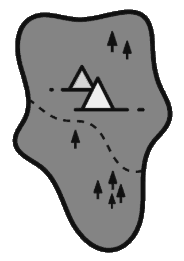 Coastal and island communities are highly dependent on marine resources for their livelihoods, with fisheries, tourism, and maritime industries forming the backbone of their economies. However, overfishing, climate change, and unsustainable tourism practices threaten income sources, pushing many into poverty. Sustainable economic development through blue economy initiatives-such as marine conservation jobs, sustainable fisheries, and eco-tourism-can help lift these communities out of poverty while preserving marine ecosystems. Coastal and island communities are highly dependent on marine resources for their livelihoods, with fisheries, tourism, and maritime industries forming the backbone of their economies. However, overfishing, climate change, and unsustainable tourism practices threaten income sources, pushing many into poverty. Sustainable economic development through blue economy initiatives-such as marine conservation jobs, sustainable fisheries, and eco-tourism-can help lift these communities out of poverty while preserving marine ecosystems.
|
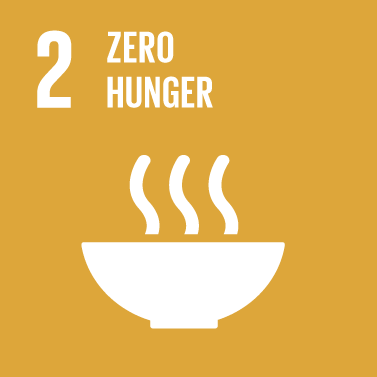 No Hunger
No Hunger
|
- Oceans provide a primary source of protein for billions globally.
- Overfishing and ocean acidification threaten food security.
- Sustainable fisheries and aquaculture are critical.
▼
|
 The ocean provides food security for billions of people, with seafood being a crucial protein source. However, challenges such as overfishing, habitat destruction, and climate-induced ocean acidification threaten fish stocks and the livelihoods of small-scale fishers. Investing in sustainable fisheries, aquaculture, and better marine management practices ensures that coastal and island communities continue to have access to nutritious food while preventing the depletion of marine biodiversity.
The ocean provides food security for billions of people, with seafood being a crucial protein source. However, challenges such as overfishing, habitat destruction, and climate-induced ocean acidification threaten fish stocks and the livelihoods of small-scale fishers. Investing in sustainable fisheries, aquaculture, and better marine management practices ensures that coastal and island communities continue to have access to nutritious food while preventing the depletion of marine biodiversity.
|
 Good Health
Good Health
and Well-Being
|
- Marine pollution (plastics, oil spills) affects water quality and food safety.
- Small islands face health challenges from climate change (vector-borne diseases, malnutrition).
▼
|
 Marine pollution, including plastic waste, oil spills, and toxic runoff from land, directly impacts water quality and marine life, creating health risks for coastal populations. Contaminated seafood can introduce toxins into the human food chain, leading to serious illnesses. Additionally, small island nations are highly vulnerable to climate change-related health threats, such as rising temperatures that increase vector-borne diseases, reduced freshwater availability, and malnutrition due to declining fish stocks. Strengthening environmental protections and healthcare systems is essential for the well-being of these communities.
Marine pollution, including plastic waste, oil spills, and toxic runoff from land, directly impacts water quality and marine life, creating health risks for coastal populations. Contaminated seafood can introduce toxins into the human food chain, leading to serious illnesses. Additionally, small island nations are highly vulnerable to climate change-related health threats, such as rising temperatures that increase vector-borne diseases, reduced freshwater availability, and malnutrition due to declining fish stocks. Strengthening environmental protections and healthcare systems is essential for the well-being of these communities.
|
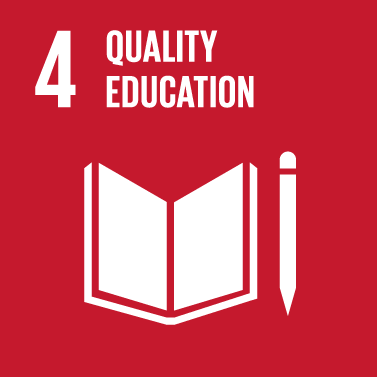 Quality Education
Quality Education
|
- Coastal and island communities need marine science education.
- Knowledge of sustainable fishing and ocean conservation is vital.
▼
|
 Education plays a vital role in equipping coastal and island populations with knowledge about marine ecosystems, sustainable fishing, and climate resilience. Incorporating marine science, conservation strategies, and blue economy opportunities into educational curriculums ensures that younger generations can develop careers that support both economic stability and environmental sustainability. Additionally, improving access to digital learning tools can help remote island communities engage in global knowledge-sharing efforts.
Education plays a vital role in equipping coastal and island populations with knowledge about marine ecosystems, sustainable fishing, and climate resilience. Incorporating marine science, conservation strategies, and blue economy opportunities into educational curriculums ensures that younger generations can develop careers that support both economic stability and environmental sustainability. Additionally, improving access to digital learning tools can help remote island communities engage in global knowledge-sharing efforts.
|
 Gender Equality
Gender Equality
|
- Women play a key role in fisheries, processing, and coastal tourism but often lack rights and financial access.
- Empowering women in marine industries can boost economic resilience.
▼
|
 Women in coastal and island communities play significant roles in fisheries, seafood processing, and tourism but often face economic and social marginalization. Limited access to financial resources, education, and decision-making opportunities restricts their ability to contribute fully to sustainable marine industries. Empowering women through targeted policies, training programs, and financial inclusion strategies not only improves gender equality but also strengthens the resilience of these communities by diversifying income sources and enhancing food security. Women in coastal and island communities play significant roles in fisheries, seafood processing, and tourism but often face economic and social marginalization. Limited access to financial resources, education, and decision-making opportunities restricts their ability to contribute fully to sustainable marine industries. Empowering women through targeted policies, training programs, and financial inclusion strategies not only improves gender equality but also strengthens the resilience of these communities by diversifying income sources and enhancing food security.
|
 Clean Water
Clean Water
and Sanitation
|
- Water scarcity is a major issue on small islands due to saltwater intrusion.
- Poor waste management and sewage affect coastal water quality.
▼
|
 Small islands and coastal areas often struggle with freshwater scarcity due to saltwater intrusion, pollution, and inadequate infrastructure. Many island nations rely on rainwater harvesting and desalination for drinking water, making them highly vulnerable to changing rainfall patterns and extreme weather events. Improving wastewater treatment, reducing marine pollution, and investing in sustainable water management systems are critical for ensuring clean water access and maintaining healthy marine ecosystems.
Small islands and coastal areas often struggle with freshwater scarcity due to saltwater intrusion, pollution, and inadequate infrastructure. Many island nations rely on rainwater harvesting and desalination for drinking water, making them highly vulnerable to changing rainfall patterns and extreme weather events. Improving wastewater treatment, reducing marine pollution, and investing in sustainable water management systems are critical for ensuring clean water access and maintaining healthy marine ecosystems.
|
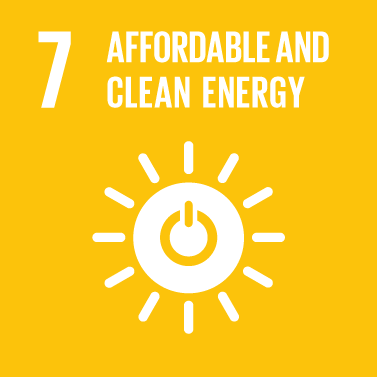 Affordable and
Affordable and
Clean Energy
|
- Many islands depend on imported fossil fuels.
- Renewable energy (tidal, offshore wind, solar) can reduce environmental impact and energy costs.
▼
|
 Many island nations rely on imported fossil fuels, making energy both expensive and environmentally harmful. Shifting to renewable energy sources such as offshore wind, tidal, and solar power can reduce dependence on costly imports while lowering carbon emissions and protecting marine ecosystems from oil spills. Investing in decentralized renewable energy solutions ensures that remote coastal communities have access to affordable and sustainable electricity.
Many island nations rely on imported fossil fuels, making energy both expensive and environmentally harmful. Shifting to renewable energy sources such as offshore wind, tidal, and solar power can reduce dependence on costly imports while lowering carbon emissions and protecting marine ecosystems from oil spills. Investing in decentralized renewable energy solutions ensures that remote coastal communities have access to affordable and sustainable electricity.
|
 Decent Work and
Decent Work and
Economic Growth
|
- Sustainable coastal tourism and blue economy initiatives can boost job opportunities.
- Overdependence on tourism makes islands vulnerable to economic shocks.
▼
|
 Sustainable coastal tourism, fisheries, and marine-based industries offer significant employment opportunities, but economic instability often affects these sectors. Overdependence on tourism makes small island economies particularly vulnerable to external shocks, such as pandemics or natural disasters. Supporting resilient blue economy initiatives, such as sustainable aquaculture, marine biotechnology, and responsible tourism, can create stable job opportunities while safeguarding ocean health.
Sustainable coastal tourism, fisheries, and marine-based industries offer significant employment opportunities, but economic instability often affects these sectors. Overdependence on tourism makes small island economies particularly vulnerable to external shocks, such as pandemics or natural disasters. Supporting resilient blue economy initiatives, such as sustainable aquaculture, marine biotechnology, and responsible tourism, can create stable job opportunities while safeguarding ocean health.
|
 Industry, Innovation,
Industry, Innovation,
and Infrastructure
|
- Ports, fisheries, and marine transport need climate-resilient infrastructure.
- Digital tools can improve marine resource management.
▼
|
 Coastal and island regions require resilient infrastructure to support fisheries, tourism, and trade. Ports, marine transport networks, and fisheries facilities need to be climate-resilient to withstand rising sea levels and extreme weather events. Technological innovations, such as satellite monitoring for illegal fishing and digital tools for marine resource management, can improve efficiency and sustainability in ocean-based industries. Investing in smart infrastructure is essential for long-term economic and environmental stability.
Coastal and island regions require resilient infrastructure to support fisheries, tourism, and trade. Ports, marine transport networks, and fisheries facilities need to be climate-resilient to withstand rising sea levels and extreme weather events. Technological innovations, such as satellite monitoring for illegal fishing and digital tools for marine resource management, can improve efficiency and sustainability in ocean-based industries. Investing in smart infrastructure is essential for long-term economic and environmental stability.
|
 Reduced Inequalities
Reduced Inequalities
|
- Small island states face economic and climate-related disadvantages.
- Fair trade and market access for coastal products can reduce disparities.
▼
|
 Small island developing states (SIDS) face economic and environmental disadvantages due to their geographic isolation and vulnerability to climate change. These disparities affect trade, economic growth, and access to global markets. Strengthening international cooperation, providing fair trade opportunities for marine products, and ensuring that small island voices are represented in global climate negotiations can help reduce inequalities and support sustainable development.
Small island developing states (SIDS) face economic and environmental disadvantages due to their geographic isolation and vulnerability to climate change. These disparities affect trade, economic growth, and access to global markets. Strengthening international cooperation, providing fair trade opportunities for marine products, and ensuring that small island voices are represented in global climate negotiations can help reduce inequalities and support sustainable development.
|
 Sustainable Cities
Sustainable Cities
and Communities
|
- Coastal urbanization must consider rising sea levels and extreme weather risks.
- Nature-based solutions (mangroves, coral reef protection) improve resilience.
▼
|
 Urbanization along coastlines increases risks of environmental degradation, including loss of mangroves, coral reefs, and wetlands that serve as natural barriers against storms and erosion. Sustainable urban planning in coastal cities should integrate nature-based solutions, such as restoring coastal ecosystems and implementing flood-resistant infrastructure. Ensuring that urban expansion does not compromise marine biodiversity is critical for maintaining both ecological and economic stability.
Urbanization along coastlines increases risks of environmental degradation, including loss of mangroves, coral reefs, and wetlands that serve as natural barriers against storms and erosion. Sustainable urban planning in coastal cities should integrate nature-based solutions, such as restoring coastal ecosystems and implementing flood-resistant infrastructure. Ensuring that urban expansion does not compromise marine biodiversity is critical for maintaining both ecological and economic stability.
|
 Responsible Consumption and Production
Responsible Consumption and Production
|
- Reducing plastic waste and unsustainable seafood consumption helps ocean health.
- Circular economy approaches can benefit coastal communities.
▼
|
 Plastic pollution and unsustainable seafood consumption pose significant threats to ocean health. Encouraging responsible fishing practices, reducing single-use plastics, and promoting circular economy initiatives can help minimize marine waste and protect biodiversity. Supporting local, sustainably harvested seafood and eco-friendly products benefits both the environment and the livelihoods of coastal communities.
Plastic pollution and unsustainable seafood consumption pose significant threats to ocean health. Encouraging responsible fishing practices, reducing single-use plastics, and promoting circular economy initiatives can help minimize marine waste and protect biodiversity. Supporting local, sustainably harvested seafood and eco-friendly products benefits both the environment and the livelihoods of coastal communities.
|
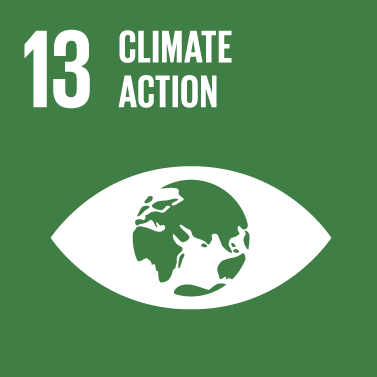 Climate Action
Climate Action
|
- Small island states are on the frontlines of climate change (rising seas, stronger storms).
- Global action on emissions is crucial for their survival.
▼
|
 Small island nations are at the forefront of climate change, facing rising sea levels, stronger hurricanes, and coral bleaching. Despite contributing minimally to global carbon emissions, they suffer disproportionately from climate impacts. Urgent global action to reduce greenhouse gas emissions, enhance climate adaptation strategies, and provide financial and technical support for climate resilience is critical for the survival of these vulnerable regions.
Small island nations are at the forefront of climate change, facing rising sea levels, stronger hurricanes, and coral bleaching. Despite contributing minimally to global carbon emissions, they suffer disproportionately from climate impacts. Urgent global action to reduce greenhouse gas emissions, enhance climate adaptation strategies, and provide financial and technical support for climate resilience is critical for the survival of these vulnerable regions.
|
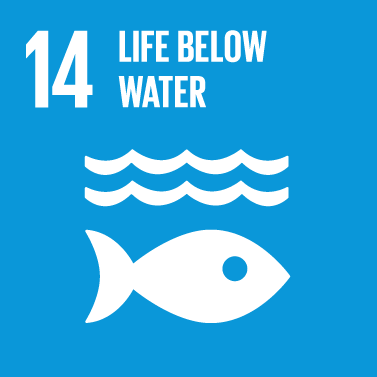 Life Below Water
Life Below Water
|
- Directly addresses ocean conservation, sustainable fishing, marine pollution, and protected areas.
- Coastal and island communities depend on healthy oceans.
▼
|
 The health of the ocean is directly linked to the survival of coastal and island communities. Overfishing, pollution, habitat destruction, and climate change are putting immense pressure on marine ecosystems. Protecting marine biodiversity through marine protected areas, sustainable fisheries management, and reducing ocean pollution is essential for maintaining the balance of marine life and supporting the livelihoods of millions who depend on the sea.
The health of the ocean is directly linked to the survival of coastal and island communities. Overfishing, pollution, habitat destruction, and climate change are putting immense pressure on marine ecosystems. Protecting marine biodiversity through marine protected areas, sustainable fisheries management, and reducing ocean pollution is essential for maintaining the balance of marine life and supporting the livelihoods of millions who depend on the sea.
|
 Life on Land
Life on Land
|
- Coastal forests (mangroves) and wetlands protect against erosion and storms.
- Land-based pollution (agriculture, deforestation) impacts marine ecosystems.
▼
|
 Coastal forests, mangroves, and wetlands are essential for protecting shorelines from erosion and extreme weather events. However, land-based pollution from agriculture, deforestation, and urban expansion affects marine ecosystems, leading to loss of biodiversity. Integrated land-sea conservation approaches, such as watershed management and reforestation of coastal areas, are necessary to maintain ecological balance and prevent further damage to marine environments.
Coastal forests, mangroves, and wetlands are essential for protecting shorelines from erosion and extreme weather events. However, land-based pollution from agriculture, deforestation, and urban expansion affects marine ecosystems, leading to loss of biodiversity. Integrated land-sea conservation approaches, such as watershed management and reforestation of coastal areas, are necessary to maintain ecological balance and prevent further damage to marine environments.
|
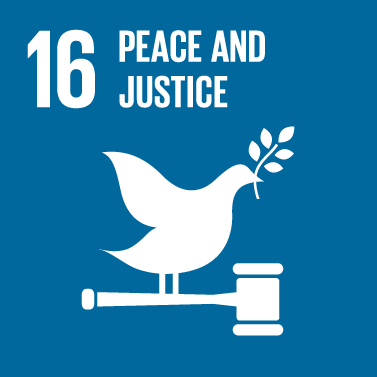 Peace, Justice, and Strong Institutions
Peace, Justice, and Strong Institutions
|
- Many small islands have disputes over marine borders and resources.
- Protecting indigenous and local rights over marine resources is essential.
▼
|
 Marine governance is crucial for ensuring sustainable use of ocean resources and preventing conflicts over territorial waters, illegal fishing, and resource exploitation. Small island nations often struggle with enforcing maritime regulations due to limited resources. Strengthening legal frameworks, enhancing regional cooperation, and protecting indigenous and local rights to marine resources are essential for promoting peace and sustainability in ocean governance.
Marine governance is crucial for ensuring sustainable use of ocean resources and preventing conflicts over territorial waters, illegal fishing, and resource exploitation. Small island nations often struggle with enforcing maritime regulations due to limited resources. Strengthening legal frameworks, enhancing regional cooperation, and protecting indigenous and local rights to marine resources are essential for promoting peace and sustainability in ocean governance.
|
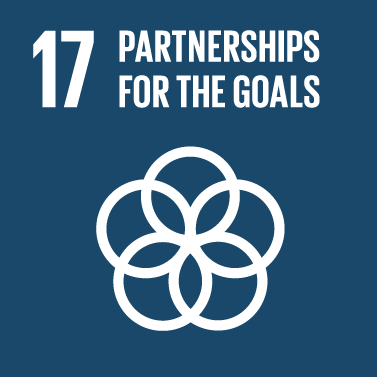 Partnerships for the Goals
Partnerships for the Goals
|
- International collaboration is key for climate finance, ocean conservation, and sustainable fisheries.
▼
|
 The challenges facing oceans, coasts, and small islands require strong global partnerships for effective solutions. International cooperation is necessary to support climate adaptation, marine conservation, and economic resilience in vulnerable regions. Collaborative efforts between governments, businesses, scientists, and local communities can drive innovative solutions, secure financing for climate action, and ensure that small island developing states have a voice in global decision-making processes.
The challenges facing oceans, coasts, and small islands require strong global partnerships for effective solutions. International cooperation is necessary to support climate adaptation, marine conservation, and economic resilience in vulnerable regions. Collaborative efforts between governments, businesses, scientists, and local communities can drive innovative solutions, secure financing for climate action, and ensure that small island developing states have a voice in global decision-making processes.
|
A Dip in the Ocean
The Sustainable Development Goals (SDGs) provide a transformative framework that recognizes the interdependence between environmental protection, economic development, and social equity. For oceans, coasts, and small islands, the SDGs underscore how marine sustainability is not limited to SDG 14 alone but is intricately connected to the entire agenda. Each goal, from poverty alleviation and food security to climate action and global partnerships, has a direct or indirect bearing on the resilience and prosperity of marine and coastal systems.
Small island developing states and coastal communities face a convergence of vulnerabilities, including climate-induced disasters, economic instability, and diminishing natural resources. Yet these regions also offer powerful opportunities for innovation in sustainable livelihoods, marine governance, and ecosystem restoration. Strengthening adaptive capacities and promoting inclusive, community-based strategies are critical for achieving long-term resilience in these fragile geographies.
To secure a sustainable future for oceans and coastal regions, a holistic approach is needed?one that bridges global goals with local actions. This requires collaborative governance, inclusive financing mechanisms, and strong knowledge systems that empower local voices and respect ecological limits. As the SDGs continue to guide international development, their successful implementation will depend on how effectively they address the unique needs and strengths of ocean-dependent communities around the world.
|

